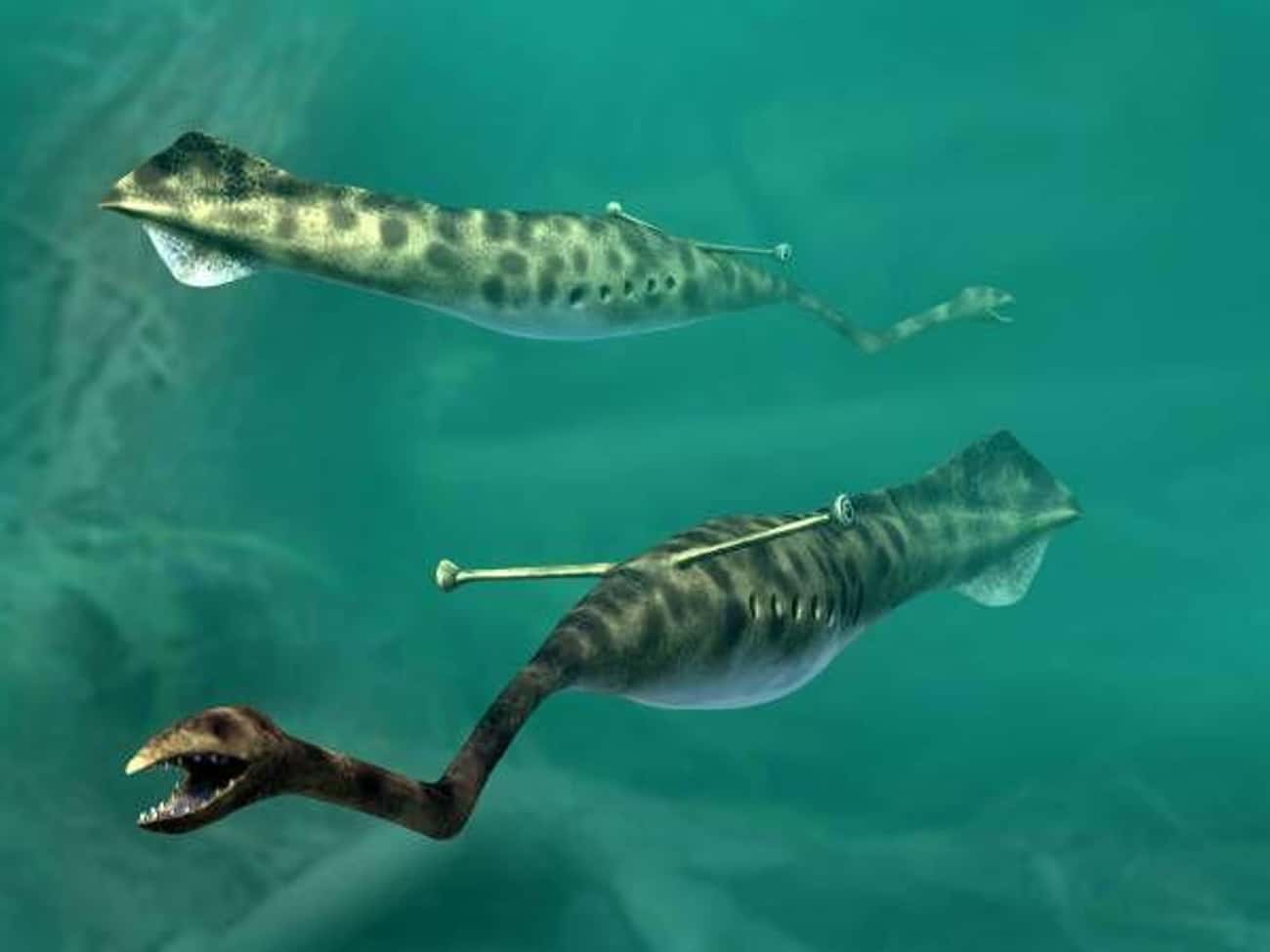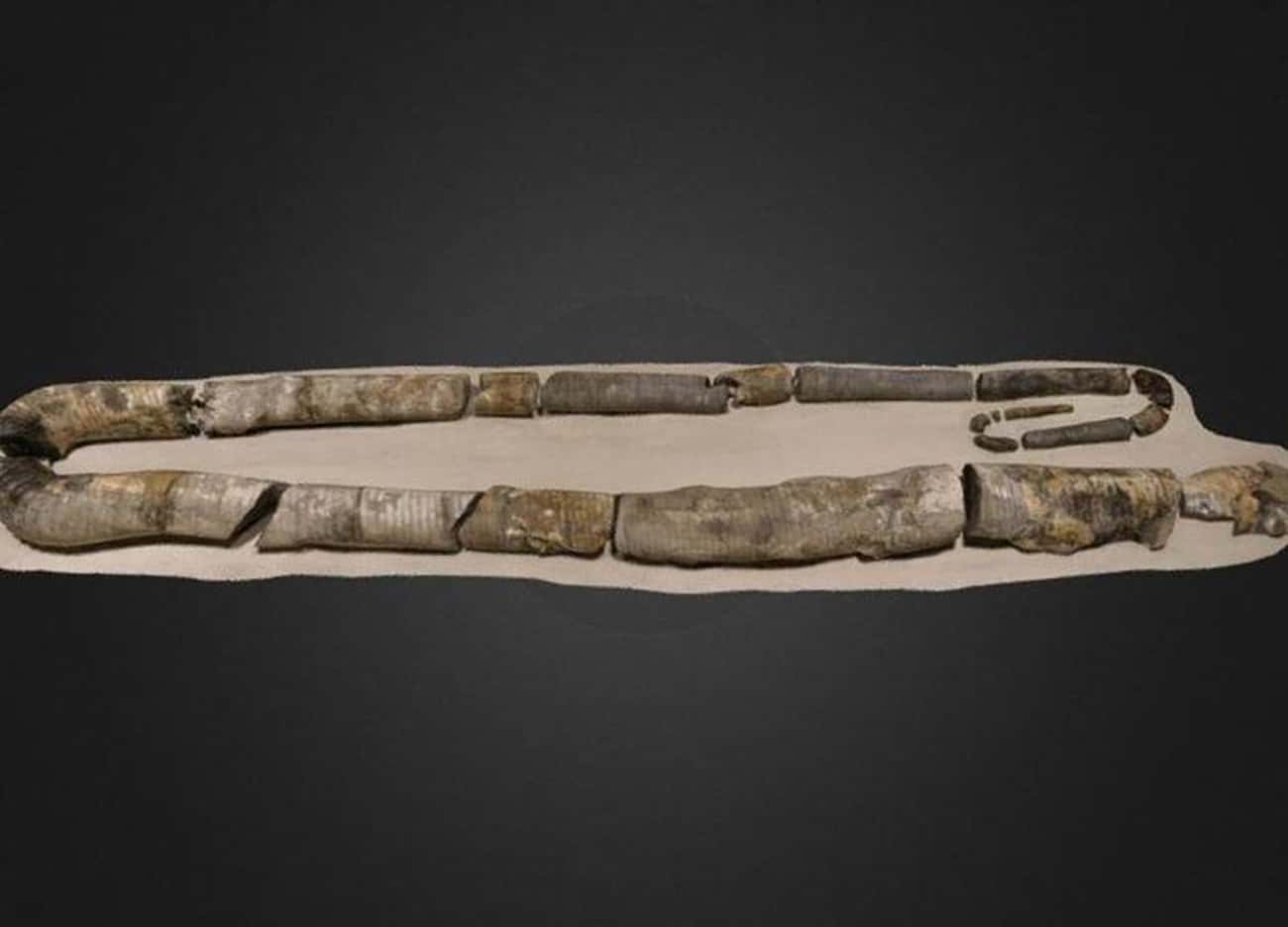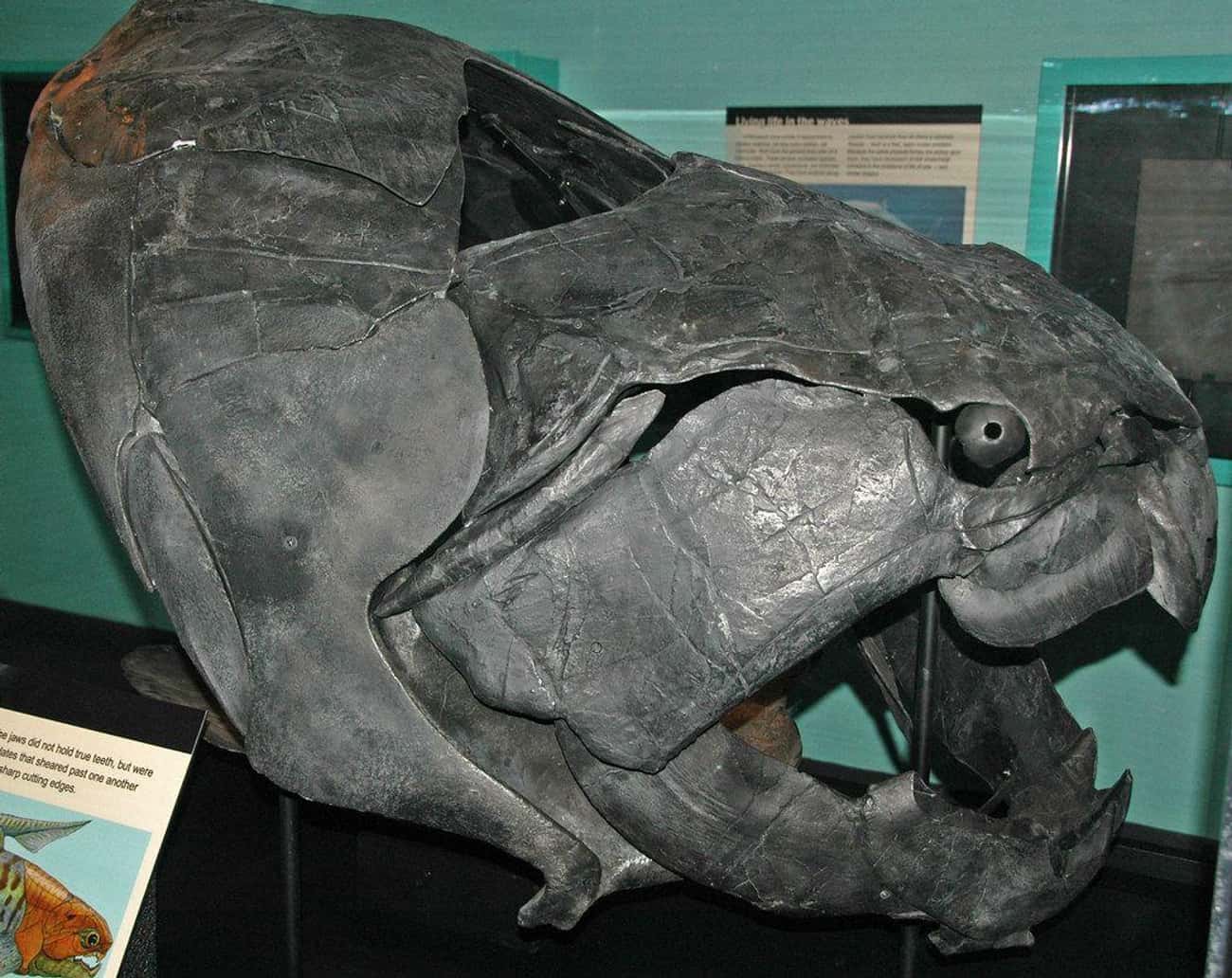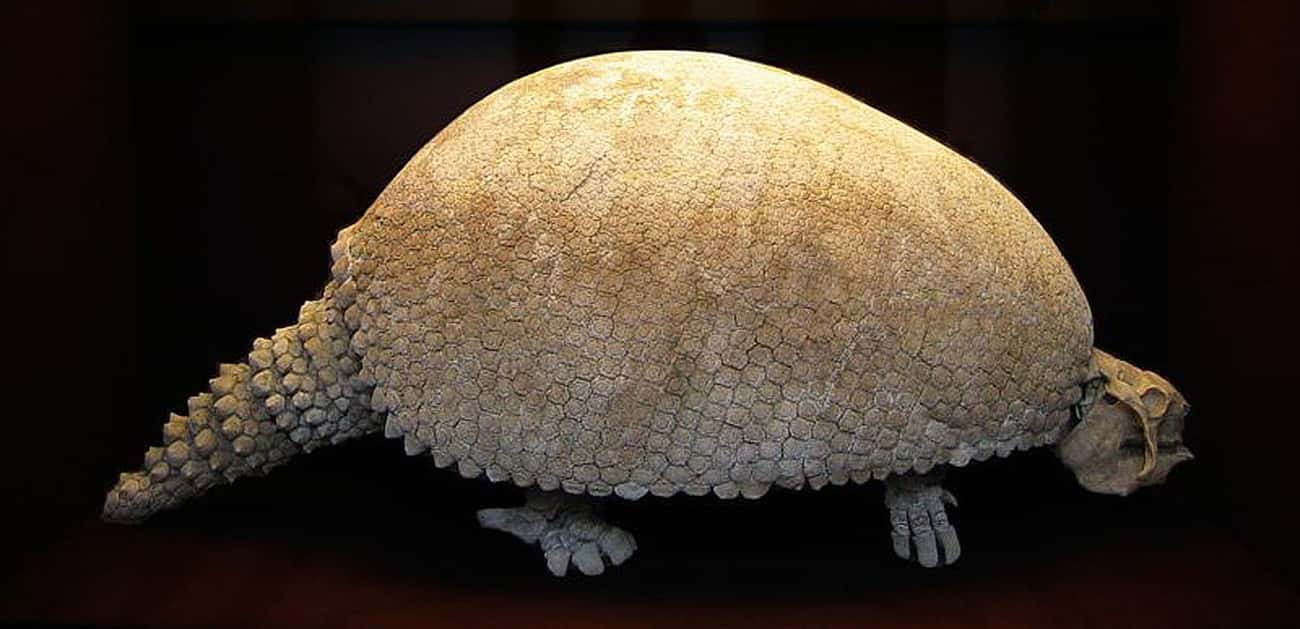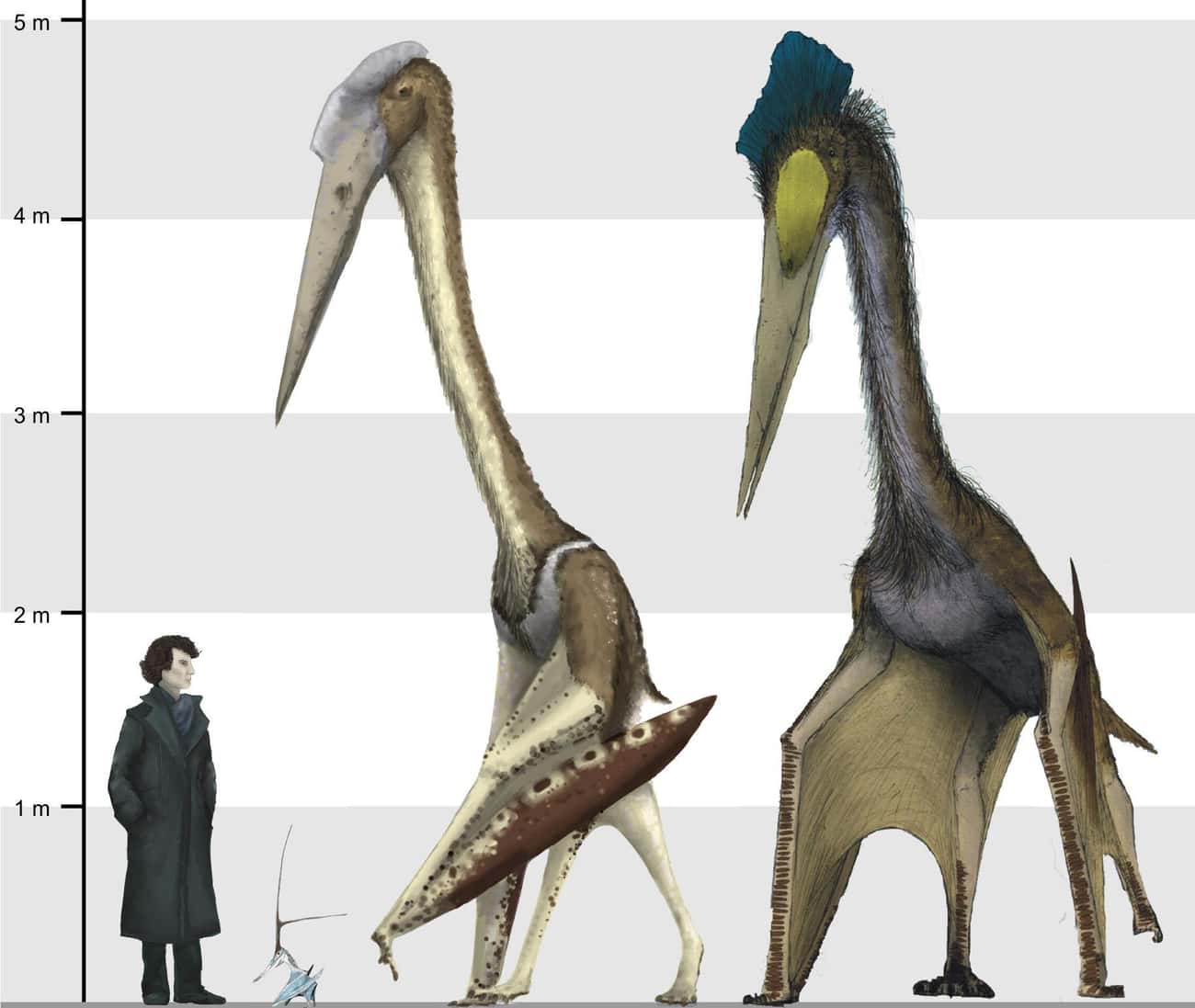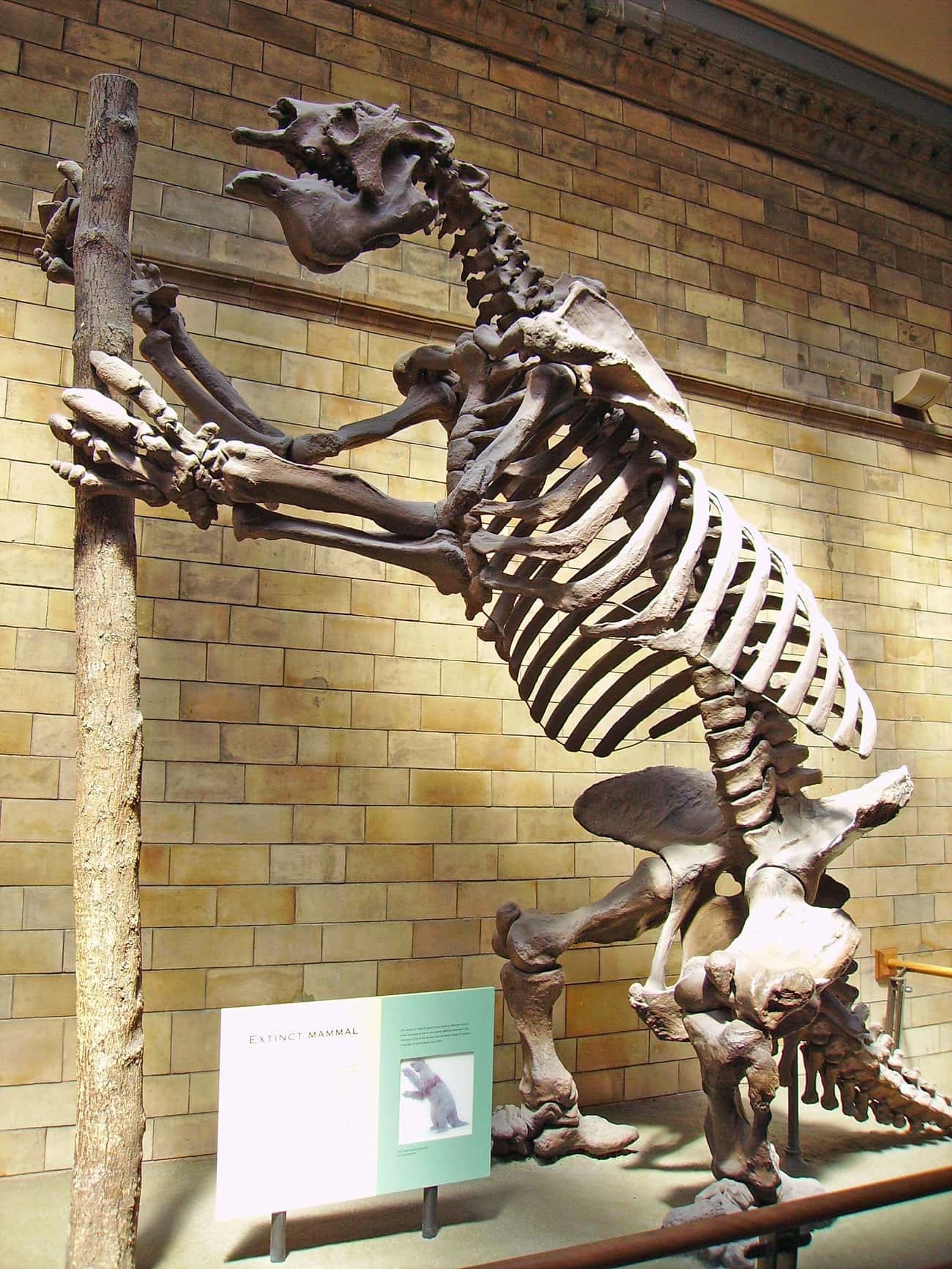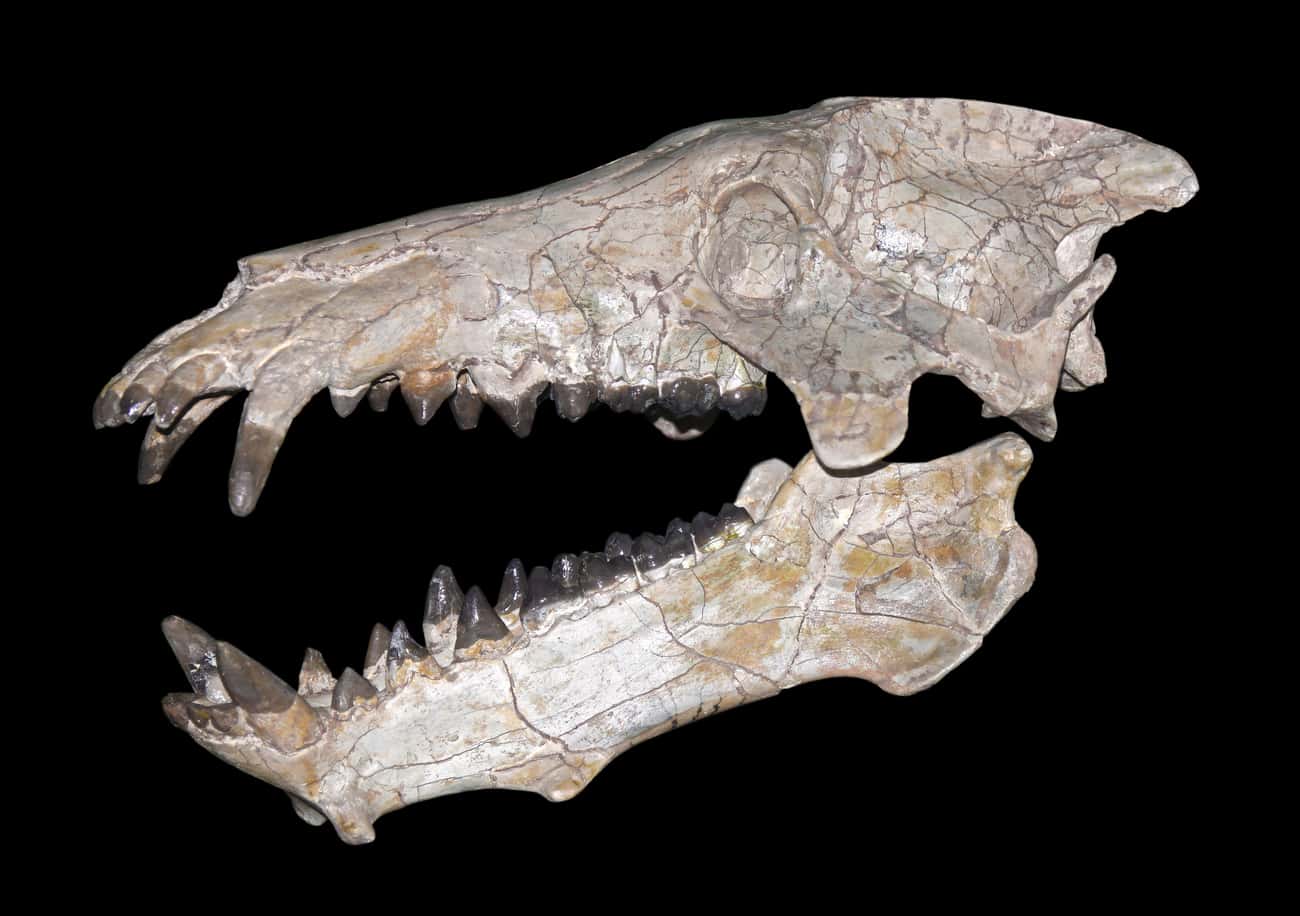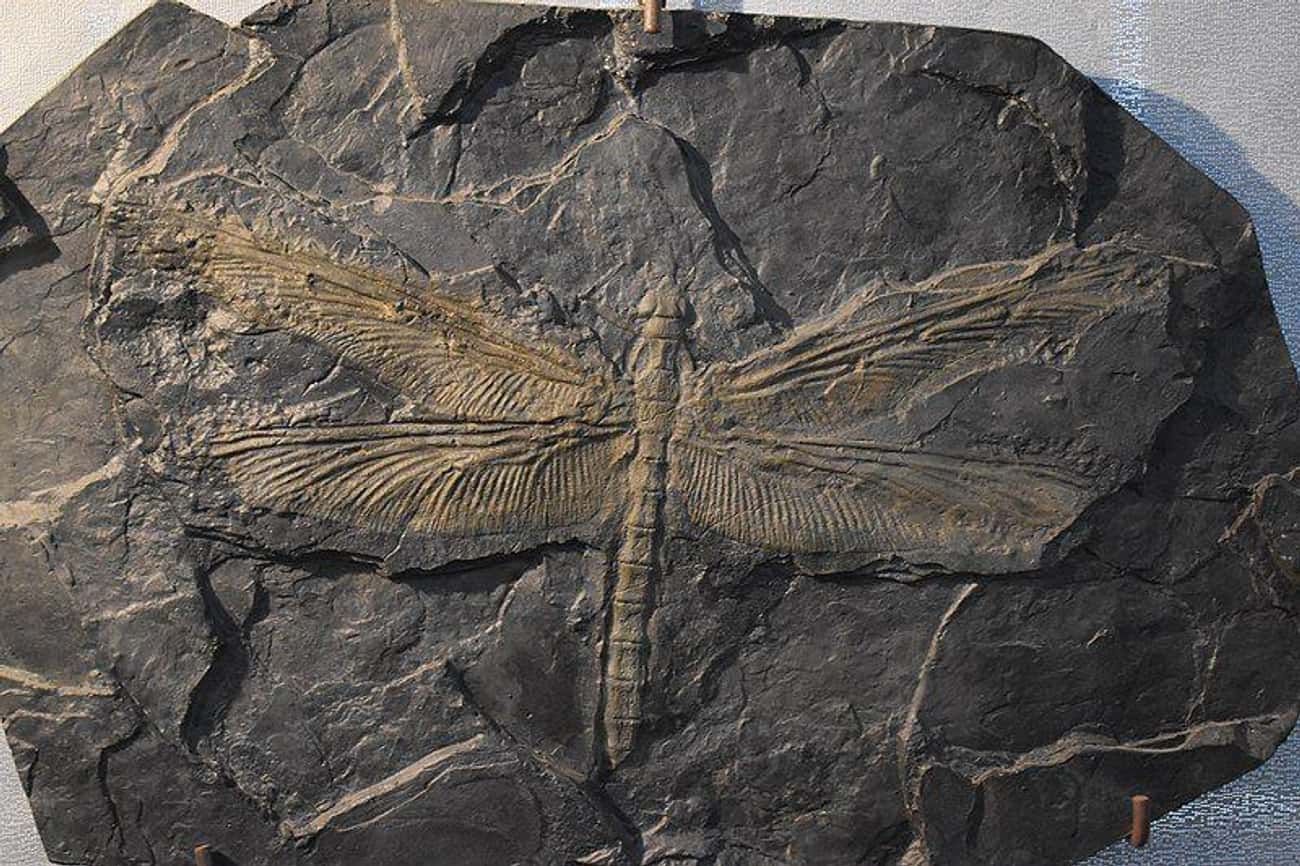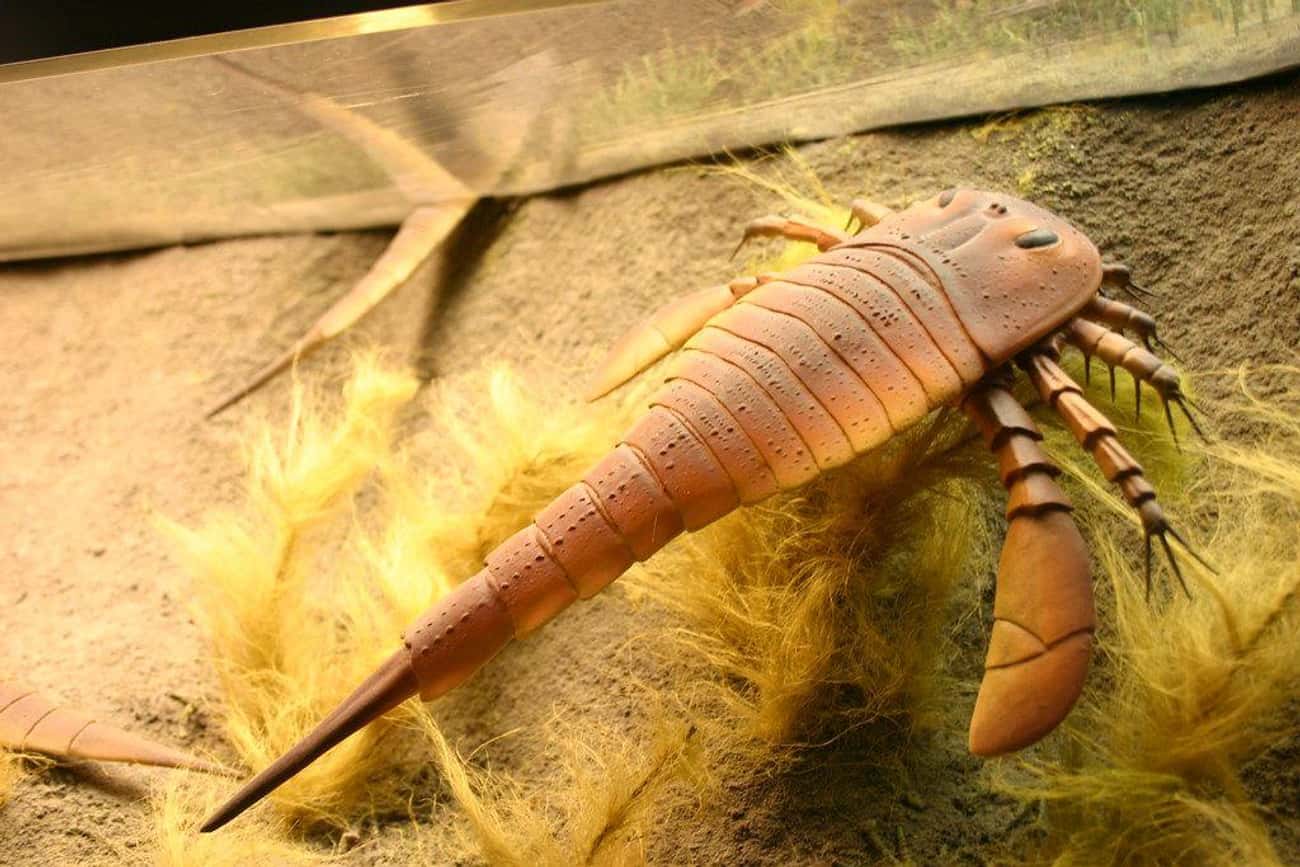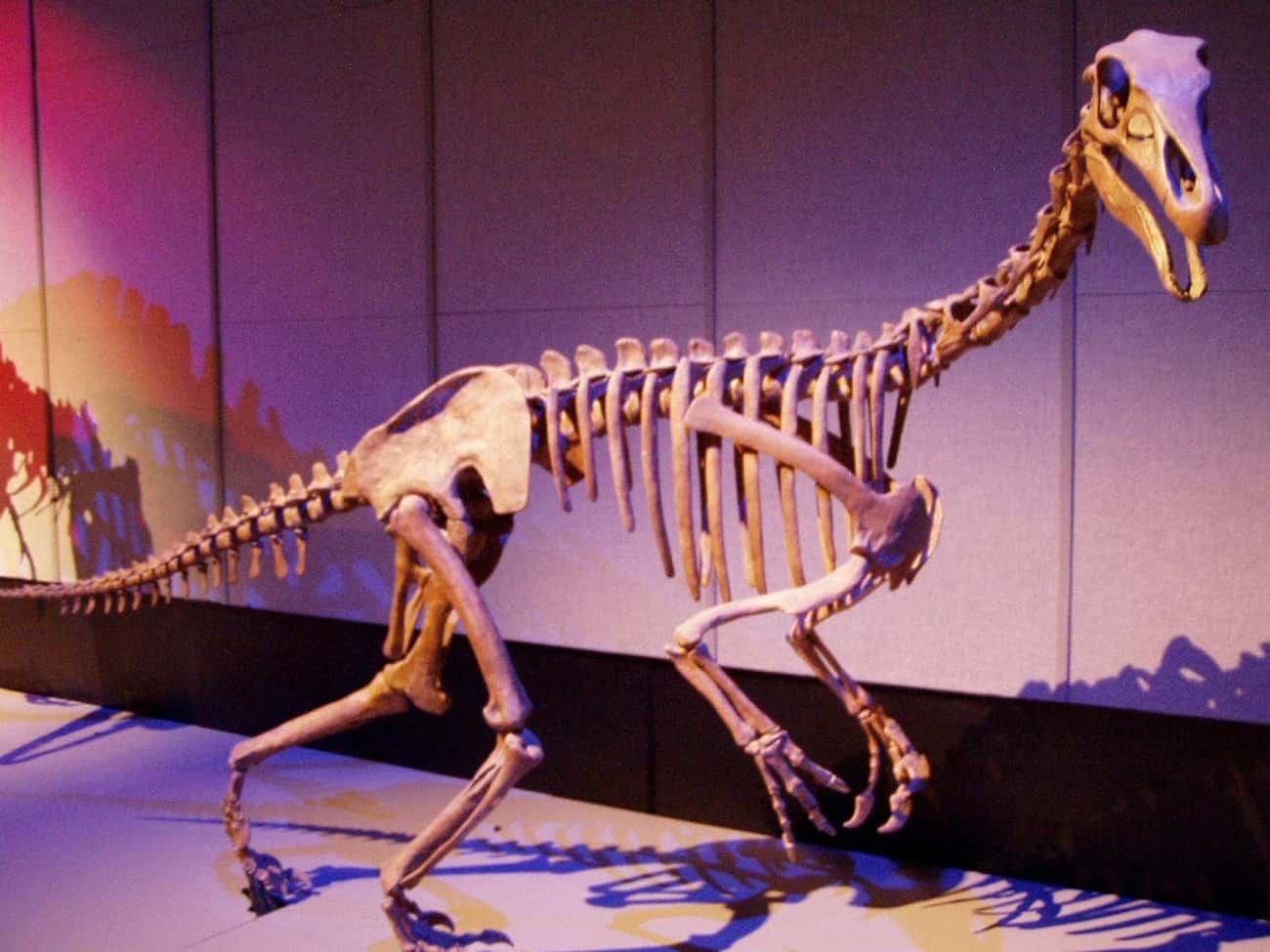14 Of The Strangest Prehistoric Creatures We Could Find
-
The Tully Monster Was An Ancient Lamprey
For decades, the Tullimonstrum (or Tully Monster) flummoxed scientists. Considering the artist’s rendering featured here, it’s not that hard to understand why. Living in an ancient sea that once existed in Northeast Illinois, the Tully Monster had eyes situated on strange stalks and a jawless mouth that extended off a long proboscis.
Scientists have determined that the Tully Monster belonged to the same family as the modern-day lamprey. The torpedo-shaped fish used its claw-like mouth to latch onto other sea creatures, then essentially licked off the nutrients it needed.
-
A Squid-Like Creature Resembling A Paper Clip Likely Had A Lifespan Of 200 Years
Diplomoceras maximum, a tentacled sea creature that looked like both a squid and a paper clip, might have had a lifespan of 200 years. Researchers studying the extinct cephalopod, which lived about 68 million years ago, suggested that new “ribs” or ridges were added each year to its paperclip-shaped shell. At almost 5 feet long, the shell contains dozens of ribs.
“The only scenario that seems to work is to make this thing 200 years old,” said Linda Ivany, professor of evolutionary paleoecology and paleoclimatology at Syracuse University in New York.
The finding is surprising, Ivany said, because modern cephalopods like octopuses and squid live only about five years.
D. maximum, Ivany said, might have lived for such a long time because it developed a slow metabolism to cope with cold Antarctic winters when food was scarce.
-
The Dunkleosteus Could Bite You In Half
If you were to go back 400 million years, you’d likely encounter the Dunkleosteus. This 30-foot, 4-ton monster of a fish dwelled in an ancient, shallow sea that once existed in Ohio. The Dunkleosteus had fangs that protruded from self-sharpening jawbones, making it a ferocious predator.
Researchers at Chicago’s Field Museum estimate that this vicious fish could bite down with 1,100 pounds of force, more than any known fish in history. According to one of the researchers, Mark Westneat, “If one could stage a battle between a [20-foot] great white shark… and a maximum size Dunk, I would bet on the Dunk.”
-
Glyptodons Were Supersized Armadillos
Though similar in look to the Cretaceous period’s Ankylosaurus, the Glyptodon was actually much more like an armadillo. Dwelling mostly in South America as recently as 12,000 years ago, this mammal had an armored shell and clubbed tail for protection.
And while it was capable of rolling into a ball like an armadillo, there is a big distinction between the two: While the armadillos we’re familiar with might roll up to about the size of a beach ball, the Glyptodon was the size of a Volkswagen. It is thought that the main cause of its extinction was being hunted by humans, who could actually use the Glyptodon’s massive shells as livable dwellings.
-
The Quetzalcoatlus Was A Serious Flight Risk
Take a good look at the accompanying image here. Focus on the Lovecraftian beast on the far right, and then try to reconcile with this thought: “That’s a bird.” Technically, the Quetzalcoatlus was a pterosaur, but it could indeed fly like a bird.
Despite weighing nearly 600 pounds, this giant reptile could spread its 36-foot wingspan and take to the skies with a few flaps of its wings. Unfortunately, while they were the largest of all the pterosaurs, they were also the last, dying out just before the Tertiary period some 65 million years ago.
-
Photo: Ballista / Wikimedia Commons / CC-BY-SA 3.0
6432 VOTESGiant Sloths Weren’t Sleepy Little Tree Dwellers
Giants Sloths (AKA Megatheriums) roamed the Earth approximately 65.5 million years ago, after the age of the dinosaurs. Unlike modern-day sloths – who are mostly characterized by their slow movement – Giant Sloths were intimidating.
Approximately the size of an elephant and with giant claws and teeth, this prehistoric creature probably resembled something more like a grizzly bear on steroids than the tree-hanging slowpokes we know today. Fortunately for humans, most scientists believe that Giant Sloths were herbivores, so despite the fact that their tremendously strong arms and 8,000-pound frame could certainly have crushed our ancient relatives, they probably only did so in self-defense.
-
Archaeotheriums Were ‘Giant Pigs From Hell’
The “Giant Pig from Hell” – it sounds like a science-fiction horror movie from the 1950s, right? This is actually the nickname of the Archaeotherium, an ancient animal that roamed the North American Midwest some 30 million years ago that wasn’t even a pig.
In fact, Archaeotherium was more closely related to hippos and whales and belonged to the order that includes present-day cattle, deer, and sheep. The Archaeotherium was an omnivore with tusk-like canines and bone-crushing jaw power. Researchers believe the animals could use these tusks to dig tubers out of the ground and hunt. Call it what you will – a pig, a deer, a whale – the Archaeotherium was one strange animal.
-
The Thylacosmilus Was A Saber-Toothed Marsupial
While it certainly bore a resemblance to the saber-toothed tiger most of us are familiar with, the Thylacosmilus was actually a saber-toothed marsupial. Inhabiting South America during the Neogene period, the Thylacosmilus’s design is a bit of a mystery. While it certainly did have some serious canine teeth, researchers believe they probably weren’t used for hunting, but rather as tools to pry open carcasses; they were more like claws than teeth.
Pair this with their weaker jaws and a lack of incisors, and it suggests that the saber-toothed marsupial was a much less dangerous beast than the saber-toothed tiger. Of note, the similarities between the saber-toothed marsupial and tiger are what’s known as “convergent evolution,” where animals evolve in similar ways despite having different evolutionary relationships.
-
The Titanoboa Snake Weighed As Much As A Sedan
In the 1997 cult classic Anaconda, a documentary film crew finds themselves hunted by the giant, titular snake. They should consider themselves lucky that they weren’t up against a Titanoboa. As its prehistoric names suggests, the Titanoboa was enormous, weighing in at around 2,500 pounds and stretching out to between 42 and 49 feet long.
This makes it not only the largest snake to ever live on planet Earth, but also one of the most dominant predators in the post-dinosaur world. Though this horrifying slitherer looked more like a boa constrictor, it is believed that the Titanoboa hunted in swamps like an anaconda. And with a crushing force of 400 pounds per square inch, it’s not likely many prey escaped its clutches.
-
The Meganeura Dragonfly Was As Big As An Eagle
In today’s world, the wingspan of a dragonfly ranges between about 1 and 4 inches – pretty big as far as insects go. The prehistoric Meganeura put that measurement to shame, with a wingspan of up to 2½ feet. That’s roughly the same size as the average eagle, which has led some scientists to refer to this ancient predator as a “griffinfly.”
The Meganeura thrived in marshy wetlands during the Carboniferous period, which occured millions of years prior to the existence of dinosaurs. Eventually, these carnivorous bugs of prey went extinct, perhaps due to changes in atmospheric conditions or the emergence of predatory birds.
-
Sea Scorpions Could Be 6 Feet Long
Fossilized Eurypterids – also known as sea scorpions – have been found all over the world. Despite living in water, sea scorpions were not crustaceans, but rather ancient anthropods, belonging to the same class as horseshoe crabs, spiders, and scorpions. These sea-dwelling creatures could grow as large as 8 feet long and had 1½-foot-long claws.
There is some debate as to whether sea scorpions were fierce predators or more subdued scavengers. In either case, their sheer size and global stretch suggest that they were a dominant species some 390 million years ago, which isn’t hard to imagine considering how much fear the more modest, present-day scorpion strikes into pretty much anyone who sees it.
-
Related Post
A shocking documentary proves that mermaids do exist
SHOCKING Revelation: Thuya, Mother of Queen Tiye, Was the Grandmother of Akhenaten and Tutankhamun—What Ancient Egyptian Secrets Did She Leave Behind?
Breaking News: Astonishing Discoveries at Karahan Tepe Confirm an Extraterrestrial Civilization is Hiding on Earth, and NO ONE Knows!
Breaking News: Researchers FINALLY Discover U.S. Navy Flight 19 After 75 Years Lost in the Bermuda Triangle!
NASA’s Secret Investigation: Uncovering the Astonishing Mystery of the UFO Crash on the Mountain!
Explosive UFO Docs LEAKED: Startling Proof That Aliens Ruled Ancient Egypt!
